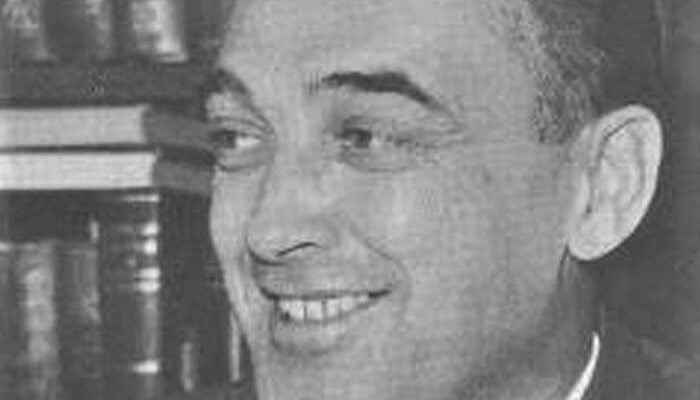Alfred Elton Van Vogt is considered one of the leading figures of the golden age (1920-1995) of American science fiction, with landmark works such as In Pursuit of the Slans, The Wildlife space and The World of Ā. The French translation of Le Monde des Ā, carried out by Boris Vian, is helping to launch science fiction in France.
Flight through reading
From a family of Dutch origin, AE Van Vogt is the second of six children. His father multiplies the jobs in various places. First a grocer in the small village of Morden, he became attorney, then director for a company of maritime transport, which forces the family to move around a lot, and young Alfred finds it difficult to integrate into his schools. He becomes lonely and begins to read fairy tales, then moves on to adventure novels, which he rents to a classmate. Voracious, he begins to devour books at the rate of two a day. It was during this period that he discovered the science fiction magazine Amazing stories. Then fourteen years old, he began to feel the need to write.
In 1929, the Great Depression hit Canada, and the business of his father’s company collapsed. Forced to find a job, Alfred was hired at the census office in Ottawa in 1930.
The way of writing
Introduced to writing via the courses of Palmer’s Institute of Authorship, then to those by correspondence from Writer’s Digest, Van Vogt left his civil servant post to write in 1932. First fictionalized stories for magazines, such as true story. Then he produced parts for a station of radio. Finally Van Vogt is interested in the science fiction. In July 1939, the magazine Astounding Stories publishes Black Destroyer. Van Vogt instantly becomes a science fiction star.
World War II breaks out. Too short-sighted to be part of the army, Alfred was given a post at the Ministry of National Defense. Despite this job, Alfred continues to write, every evening until 11 p.m. This is how he writes In pursuit of the Slans, which appears as a serial in Astounding Stories and the readers cry out for the masterpiece. After participating in the war effort, Alfred settled in Toronto, and wrote two novels and fifteen short stories in two years. The entry into the war of the United States at the end of 1941, created a strong demand of the readership.
In 1945 the first part of the World of Ā, his flagship work. The novel makes a lot of noise, as much acclaimed as it is criticized. He took advantage of his success to resume his earlier novels for sale in bookstores, and developed a technique of “sewing”, binder together several existing short stories to make a novel. The fauna of space and The Silkie are typical examples.
Research and development
Always in search of innovation and renewal, AE Van Vogt will spend his life developing or studying “methods”. In 1945, he tried Dr Bates’ vision rehabilitation method, but got nothing. He develops a technique for rapid language learning. Subject to anxiety nocturnal, he often wakes up at night. But he discovers that by splitting his nights, he can use his subconscious to solve his daily problems. He will divide his hours of sleep this way for 7 years. He joins forces with L. Ron Hubbard to found the first center for dianetics in California, an innovative personal development method. However, it closes nine months later. Hubbard having joined Scientology, which he does not approve of, Alfred will open his own center thereafter.
Achieved Alzheimer’s disease, Van Vogt died in 2000 in Los Angeles.
Bibliography
The World of Ā, I have read 2007 editions
Ā Players, I Lu 2007 editions
The End of Ā, I Lu 2009 editions
Isher’s Armories, I Lu 2003 editions
The Arms Manufacturers, I Lu 2003 editions
Empire of the atom, Mnemos 2017 editions
The Sorcerer of Linn, Mnemos 2017 editions
In pursuit of the Slans, I Lu 2015 editions
The fauna of space, I Lu 2011 editions
The Silkie, I have read 1989 editions
.
fs4
